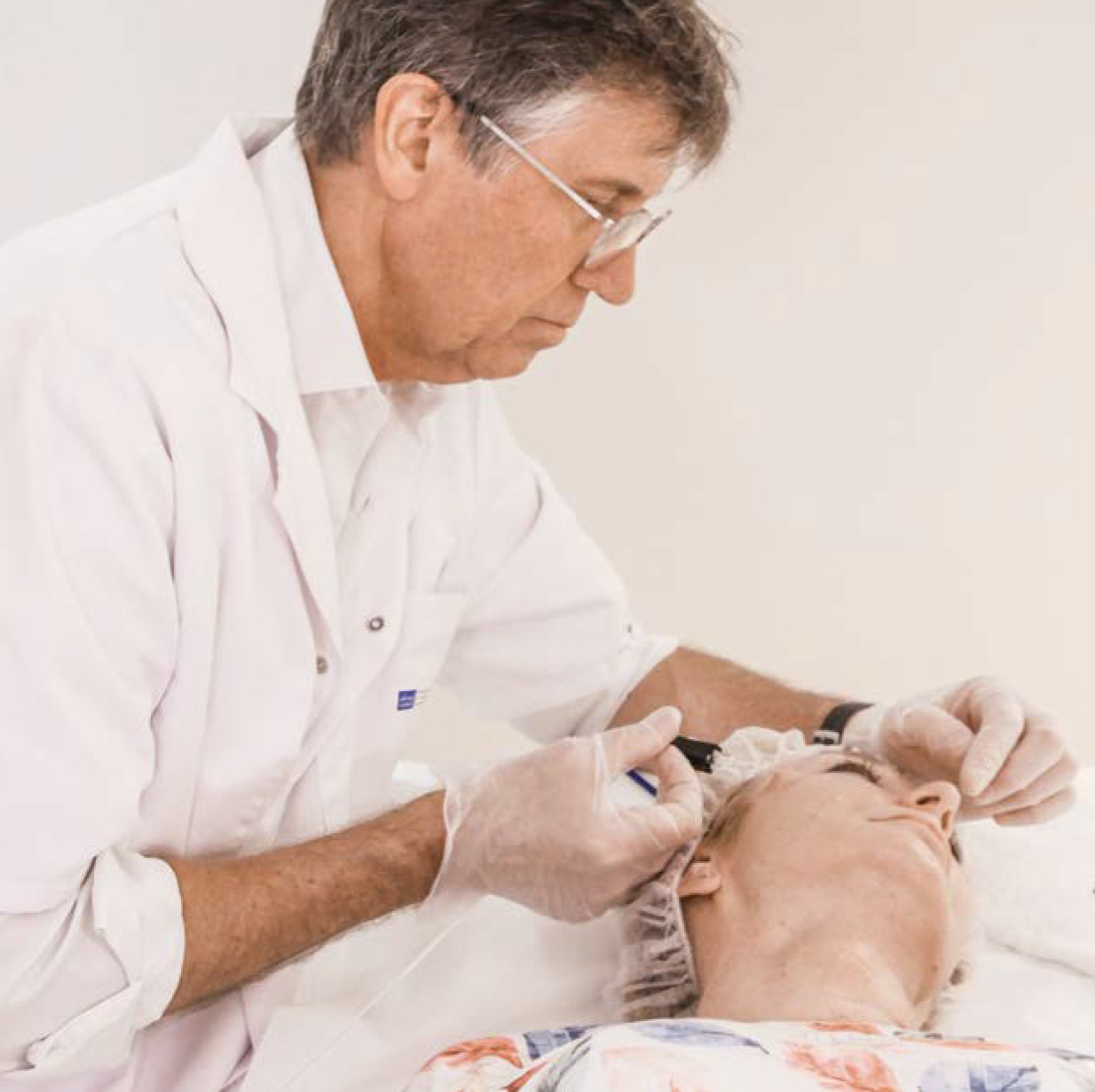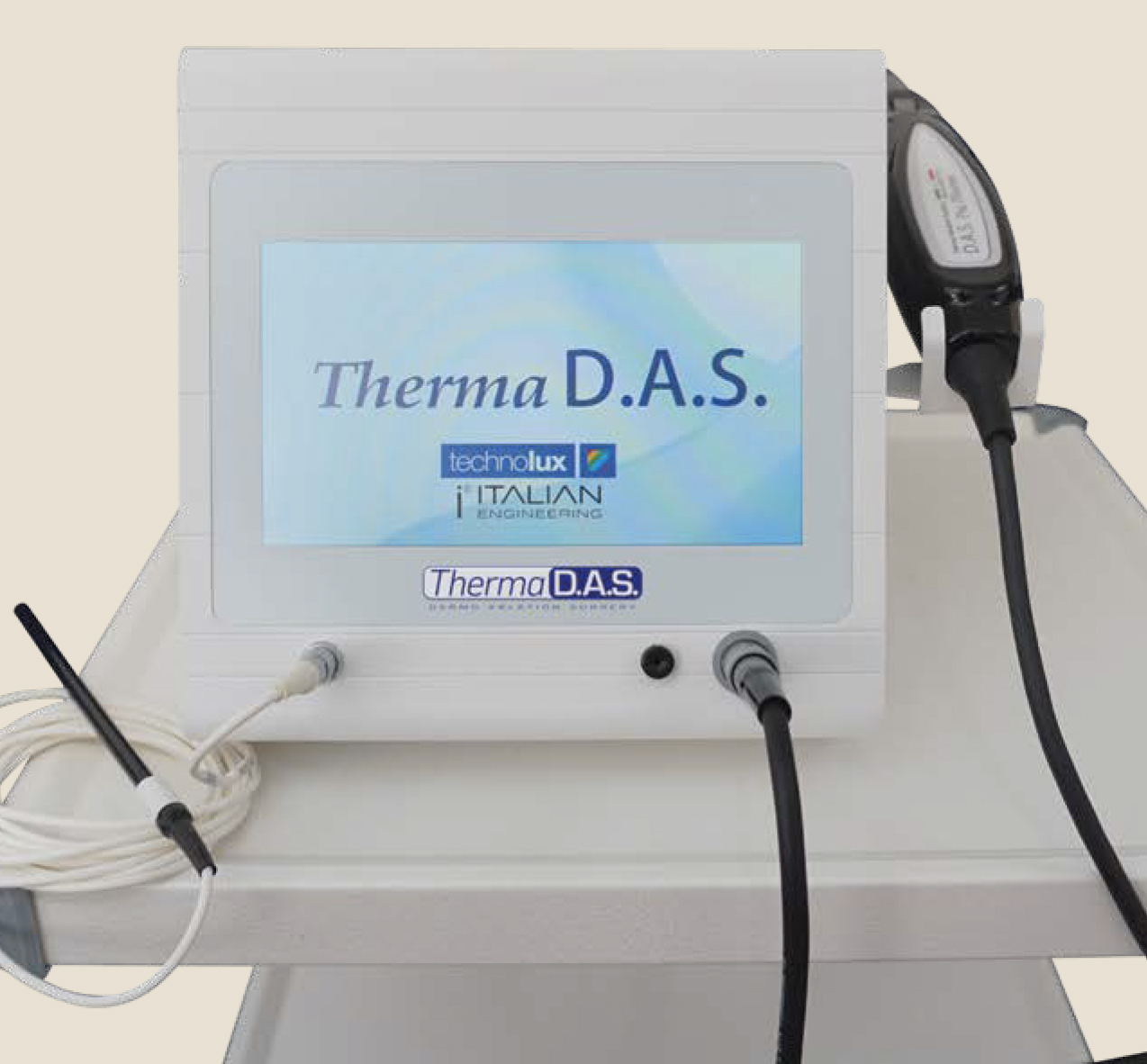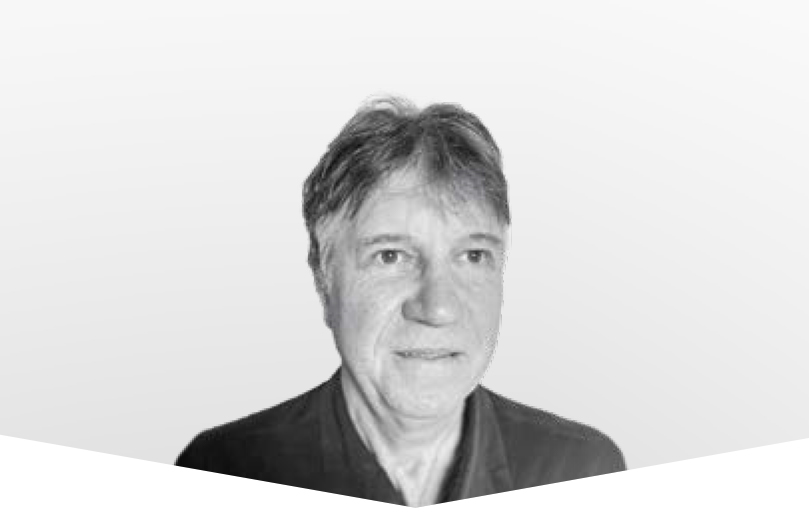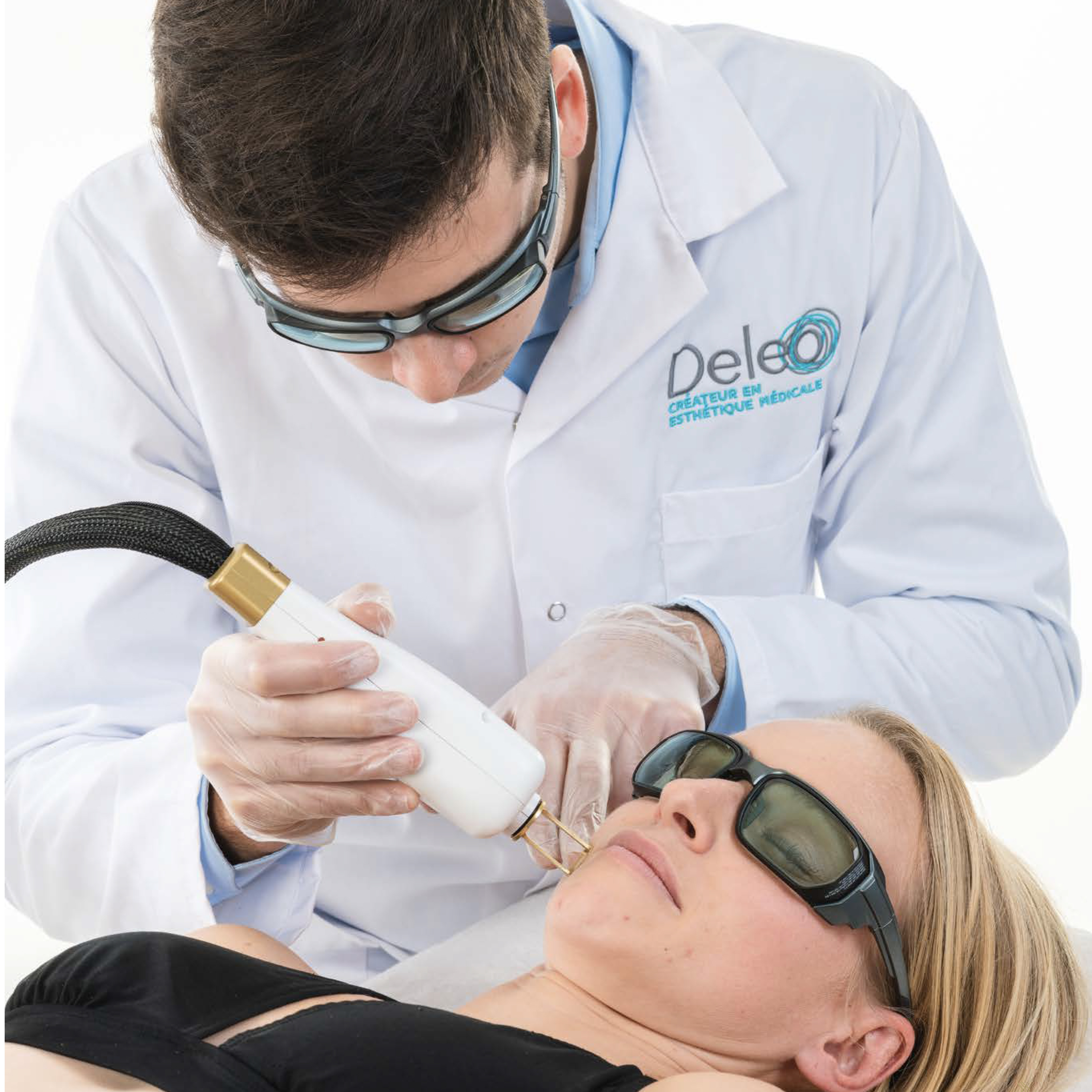By the Doctor Eric Jeanson
Today, aesthetics doctors can respond to patient demands with a combination of non-invasive therapies.

In addition to the technologies already available (HIFU and tensor threads), the Therma D.A.S. has recently been developed. Separately, the different techniques achieve significant results on skin sagging. But they are especially useful when combined, to optimise the results and their duration as part of treatment protocols. The common action of these techniques is to stimulate neocollagenesis, so by combining them we can boost and prolong their clinical results. These techniques have the added advantage of being carried out in a medical practice by any aesthetics doctor, without sedation or anaesthetic. They do not require any time off work.
1. Therma D.A.S. is a combined tool that includes two technologies.
An intuitive interface allows the doctor to choose between them.
• DAS PRO PLASMA
D.A.S. (Dermo Ablative Surgery) technology, by amplifying the thermal energy, stuns the matter (epidermis) into plasma (fourth state of the matter), thus causing punctiform destructions that lead to localised superficial retractions when they heal. The DAS Pro Plasma is different to its predecessor, the D.A.S. Medical, because it has a touch screen and a selection of predefined settings that increase safety and efficiency while making it easy to use by any doctor.
But, beyond superficial skin sagging, we can use this tool to treat a number of indications, without any risk for the patient.
There are two modes available:
a: Easy Mode
Eighteen therapeutic indications are offered, and the settings are already programmed, allowing the doctor to independently acquire the necessary experience for daily use.
The indications include benign skin removal, such as lentigos, seborrheic keratosis, benign naevus, verrucae, nodules and papules, milia, molluscum, as well as small cherry or stellar angiomas.
Next comes peel-like dermabrasion (PlasmaPeel) to reduce fine lines, skin creases and superficial scars, as well as hypertrophic scars and even keloids with additional compressive treatments.
Last comes the most commonly-performed treatments, as they are easy, quick and effective, such as the scarless removal of xanthelasmas and medical blepharoplasties for moderate dermatochalasis in the eyelids.
b: Advanced Mode
This mode allows experienced practitioners to adapt their treatment according to the patient’s skin type, the intensity of the lesions and their reaction to treatment, by modifying the settings for an optimised, personalised treatment.
• THERMOREGULATED ENDODERMAL RADIOFREQUENCY
 This is monopolar radiofrequency that acts deep within the dermis, allowing us to heat up the subcutaneous tissues from 45 to 57°C without causing any damage (burns) or pain thanks to the controlled and adaptable thermoregulation system. The doctor introduces a single-use cannula under the skin, whose tip delivers energy to achieve a tensing effect, like a lift, by inducing long-term neocollagenesis. To cover the whole treatment zone, the doctor slowly pulls the cannula out, centimetre by centimetre in a retrotracing pattern, either in a fan pattern from one entry point or in parallel lines from several entry points. The doctor has two options, depending on the indication and their experience. For a preventative effect on skin sagging in the face in a middle-aged person, it is better to carry out the treatment without an anaesthetic. The effects last a year or, at best, 18 to 24 months.
This is monopolar radiofrequency that acts deep within the dermis, allowing us to heat up the subcutaneous tissues from 45 to 57°C without causing any damage (burns) or pain thanks to the controlled and adaptable thermoregulation system. The doctor introduces a single-use cannula under the skin, whose tip delivers energy to achieve a tensing effect, like a lift, by inducing long-term neocollagenesis. To cover the whole treatment zone, the doctor slowly pulls the cannula out, centimetre by centimetre in a retrotracing pattern, either in a fan pattern from one entry point or in parallel lines from several entry points. The doctor has two options, depending on the indication and their experience. For a preventative effect on skin sagging in the face in a middle-aged person, it is better to carry out the treatment without an anaesthetic. The effects last a year or, at best, 18 to 24 months.
For a reparative action on sagging skin in an older person who is reluctant to have surgery, we recommend carrying out the treatment under local anaesthetic in order to achieve significant results in the first year, by performing 1 to 2 treatments spaced 6 to 12 months apart. Here it might be useful to add HIFU and/or tensor threads as part of a personalised treatment protocol.
This new technology treats all areas of the face that suffer from skin sagging, the oval in the lower face, a double chin and the neck. We can also treat the belly if the skin looks crumpled after liposuction, and the inner thighs if there is cellulite. For all these indications, in the same session, after the endodermal phase, we can use a cannula to inject fillers with specific biomimetic peptides to enhance the results and their duration for improved patient satisfaction.
The multiple therapeutic possibilities offered by this new tool, the Therma D.A.S., make it an essential, highly versatile tool for any aesthetics doctor. These technologies can also be included in treatment protocols to fulfil the current patient demand for the gentlest yet most effective treatments possible, without any downtime or time off work.
2. HIFU (High Intensity Focused Ultra- sounds)
This technology has been used for many years now, as it offers a lovely lifting effect without surgery, particularly on the face. The ultrasounds are focused so that the light produced at the meeting point provides a considerable increase in energy, producing coagulated impacts that lead to the repair of the tissues through neocollagenesis.
The efficacy of this technique depends on the number of im- pacts performed and the patient’s pain threshold. Treatments performed by the more recent machines are more tolerable, as the technique has been refined.
To achieve significant results on a whole face, you need to carry out a minimum of 800 shots, the equivalent of 20,000 coagulation points, which is the factor for success.
In the same session, the doctor uses 2 to 3 handpieces depending on the area and the treatment depths. They start at the deepest layers and go up towards the skin’s surface; from 4.5mm to 3mm, then 1.5mm to finish. The results are achieved gradually after 3 months, and last for one to two years. It can be used for preventing sagging, prior to a lift to prepare the skin, or after a surgical lift to prolong its benefits. For more of a curative treatment, and in patients who do not want surgery, 1 to 2 sessions are scheduled in the first year, spaced 6 to 12 months apart. This is where it is useful to combine endodermal radiofrequency and/or tensor threads in personalised treatment protocols.
3. Tensor threads
Many different threads are available nowadays and are split into two categories: unanchored, free-floating threads to hold a lift, and threads that must be fixed to a stable facial structure or to the scalp. And in each category, there are two subgroups: non-resorbable, permanent polypropylene threads and resorbable polydioxanone (PDO) threads, which are the most requested and fitted. Of these, mono-filament threads alone provoke an inflammatory reaction that cause the superficial skin to retract. There are also threads with uni- or bi-directional barbs or teeth, which support the soft tissue when inserted underneath the skin. Finally, there are threads with cones that stimulate collagen production, and which maintain the tissues.
When using tensor threads, in addition to the mechanical and inflammatory action of the needles and threads, there will also be neocollagenesis that is responsible for a progressive and prolonged tensing effect. This only lasts 2 to 3 years at most, depending on the type of thread, which is why it is a good idea to combine them with personalised endodermal radiofrequency treatments and/or HIFU to prolong the benefits.
The best therapeutic strategy involves associating non-invasive technologies for better efficacy and result duration. These medical techniques are in no way alternatives to surgery, except in cases where surgery is fiercely refused. In this case, we must tell the patient that the results will not be as good as those achieved with a surgical lift, if the skin sagging is significant. However, when carried out early on and regularly, these techniques can prevent the damage caused to the face by aging. They are also straightforward to carry out in a medical practice by any aesthetics doctor, without any risks or complications for the patient.
 By the Doctor Eric Jeanson
By the Doctor Eric Jeanson
Medical Practice, Bastille, Paris. Paris Interuniversity degree in medical aesthetics and lasers – Paris, Nice, Besançon and Bordeaux Interuniversity degree in Medical Lasers for aesthetic purposes – Lyon, Paris
University degree in the Anatomy of the Face and Aesthetic Injections – Nice
Interuniversity degree in Morphological and Anti-aging Medicine – Paris, Lyon
Member of the SOFMMAA society















